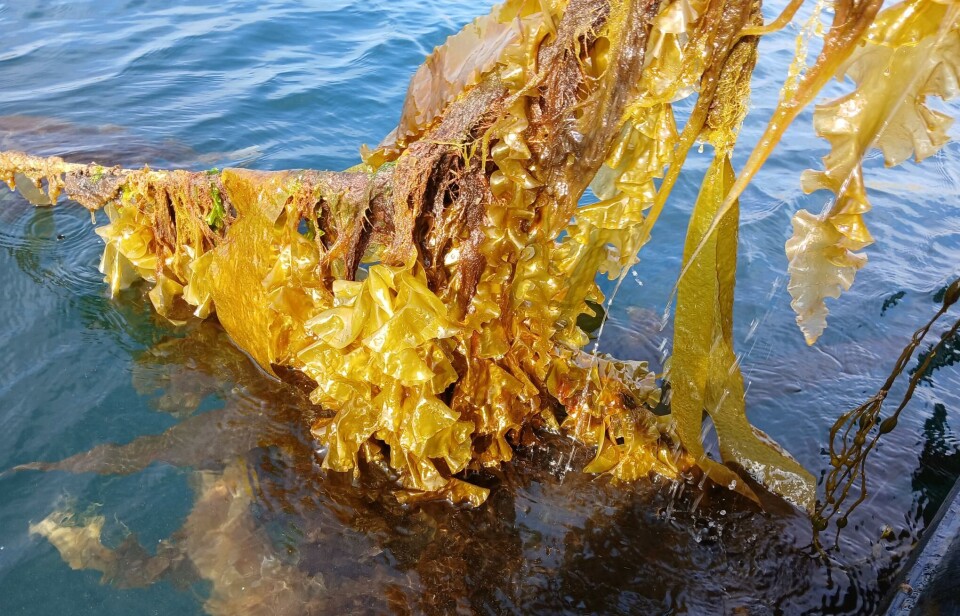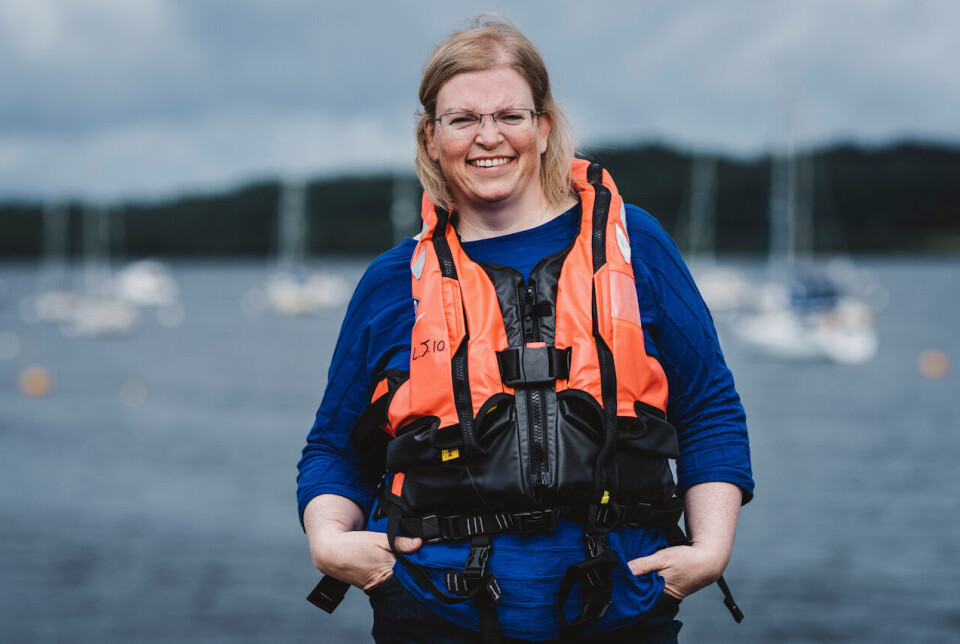
Can seaweed and salmon be a win-win?
Scottish Sea Farms is stocking fish next to kelp lines in the hope that both species will benefit
Scottish Sea Farms will this month stock salmon close to farmed sugar kelp at its Loch Spelve site to see how both its fish and the seaweed crop can benefit each other.
The farm, which had been fallowed, was chosen as a suitable testing ground in the collaboration between SSF and businessman and writer Guy Grieve, who ran the Ethical Shellfish Company from Mull and now plans to produce commercial quantities of sugar kelp, to be used in garden compost.
The seaweed lines, installed last October, produced encouraging growth over the winter, and this month four 90-metre-circumference pens will be stocked with salmon.
The mutual benefits of growing salmon and kelp in the same waters have been shown in multi-trophic aquaculture projects elsewhere, SSF head of sustainability and development Anne Anderson told the company’s newsletter, The Source.

“Seaweed is so beneficial in so many ways for the marine environment. As a plant, it absorbs carbon dioxide, while releasing oxygen. It’s a bit like planting trees to offset your carbon footprint,” said Anderson.
“And some of the organic nutrients, nitrogen and phosphorous, from salmon farming are absorbed to help nourish the kelp. It will be interesting to see if we get more seaweed growth once we put the salmon in.”
Improved welfare
In an earlier trial, SSF pioneered seaweed settlement within salmon pens to replace artificial hides for cleaner fish. The project, at Scallastle in the Sound of Mull, resulted in improved health and welfare for both the salmon and wild wrasse, a species of cleaner fish.
SSF sought permission for the Loch Spelve trial from farm site landlord Crown Estate Scotland and talks are now under way to amend the farming lease to cultivate seaweed longer term.
In Loch Spelve, SSF’s area support manager for Mull Andrew MacLeannan worked with Grieve and Mull-based Inverlussa Marine Services to install four 750-metre seaweed lines (a total of 3km), seeded by Dutch supplier Hortimare, and tied the lines to the raised salmon pen grid.
“We plan to stock the farm with 7kg fish, from Fishnish in the Sound of Mull, so this will only be a four or five-month cycle, not the full 18 months,” said MacLeannan.
Challenging conditions
“Loch Spelve is sheltered so ideal for seaweed, which doesn’t like strong currents, but the environmental conditions have been challenging for salmon production in the past, particularly for gill health.
“We will be looking to see if the seaweed trial has been successful from a salmon farming point of view by taking daily water samples, before and after the salmon are stocked, and checking for levels of plankton, which can impact the gills.”
Grieve, who runs Atlantic Garden, supplying seaweed-rich compost to gardeners, wanted to start producing seaweed at scale in Scotland to complement the seaweed gathered from harbours.
“One of the key points about farmed seaweed is you get a very clean product whereas when you gather it you have to remove plastic,” he said.
Best partner
“I had fished out of Loch Spelve for 12 years and it struck me as immediately obvious that the best partners for this should be someone like Scottish Sea Farms, for the simple reason that for decades they have been working at sea, through thick and thin, and through every kind of weather.
“I approached regional manager Innes Weir, and he was very supportive. We all recognised that seaweed is beneficial for the environment in different ways and agreed to look at it more closely.”
Grieve plans to keep the crop in the water until the summer to harvest as much biomass as possible, up to 30 tonnes.
“We should get 8-10 kilos per metre of seeded line, but this is a pilot, so we don’t know what to expect yet. I look forward to what we learn from this trial and what our next steps will be.”























































